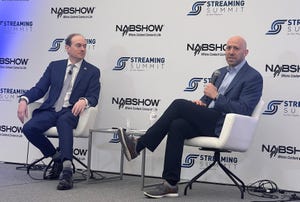Widespread confusion and uncertainty in the packet-optical transport market will cause delays in deployment

New market segments don't emerge in a neat and orderly fashion as we'd like but rather in fits and starts and with a lot of confusion along the way. Such is the case with packet-optical transport today. Moderating a recent Light Reading Webinar on The Role of Ethernet in the Rise of Packet-Optical Transport Systems reminded me of this fact.
The first point of confusion is: What actually counts as packet-optical transport? At Heavy Reading, we're seeing three architectures emerge under this umbrella. One includes the converged optical devices that combine Sonet/SDH, WDM transport, and Ethernet switching and aggregation, which we call packet-optical transport systems (P-OTSs). A second architecture consists of carrier Ethernet switch/routers (CESRs) with connection-oriented Ethernet (COE), which can be combined with a separate WDM layer. A third is integrated transponders on Layer 3 routers, typically referred to as IP over DWDM (IPoDWDM).
Further confusion comes from the COE debate and the role of these technologies on both P-OTS platforms and CESR platforms. Operators may have different opinions on the various flavors of COE, depending on the packet-optical platform being used. For example, we have seen Verizon Communications Inc. (NYSE: VZ) shun PBB-TE (the standardized name of PBT) for Ethernet services applications, while selecting PBB-TE as their choice for converged P-OTS. Others, including BT Group plc (NYSE: BT; London: BTA), may end up doing something similar.
A third point of confusion surrounds T-MPLS and MPLS-TP, the COE technologies that are synonymous -- but not the same. To review, the International Telecommunication Union (ITU) 's T-MPLS standard came under fire by the Internet Engineering Task Force (IETF) because the IETF, justifiably, didn't like being excluded from an MPLS standard. The contention was seemingly resolved with an agreement between the two to work together to standardize MPLS-transport profile (MPLS-TP), announced in April 2008. The press release identified MPLS-TP as the new T-MPLS, implying that MPLS-TP is the evolution of T-MPLS. But T-MPLS is an ITU standard and MPLS-TP is not. T-MPLS is here now, and MPLS-TP is not. Vendors appear to be hedging with T-MPLS until MPLS-TP is complete. As a result, vendors' messages to the market are ambiguous, and operators continue to be confused by the whole development.
The confusion and uncertainty doesn't diminish the underlying value of packet-optical transport, but it will undoubtedly cause delays as operators sort through the mess. Vendors will be best served by setting aside minor differences where possible, and lending clarity to this emerging market.
— Sterling Perrin, Senior Analyst, Heavy Reading
Read more about:
OmdiaAbout the Author(s)
You May Also Like










